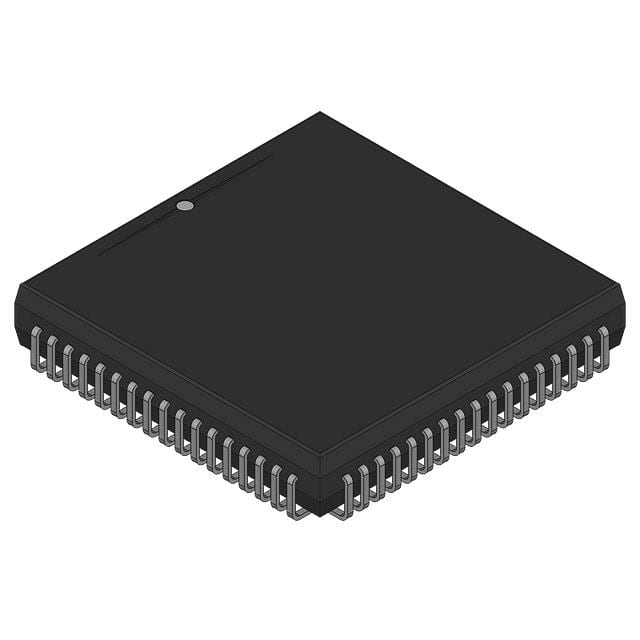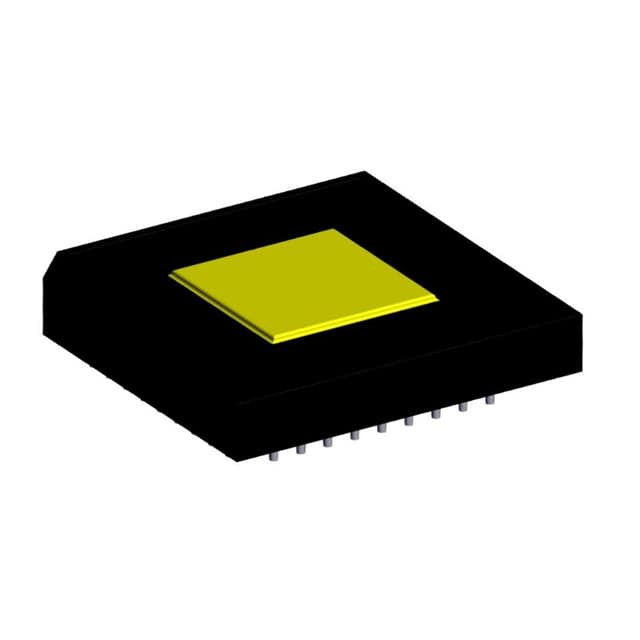OR2C10A4J160-DB Product Introduction:
Lattice Semiconductor Corporation Part Number OR2C10A4J160-DB(Embedded - FPGAs (Field Programmable Gate Array)), developed and manufactured by Lattice Semiconductor Corporation, distributed globally by Jinftry. We distribute various electronic components from world-renowned brands and provide one-stop services, making us a trusted global electronic component distributor.
OR2C10A4J160-DB is one of the part numbers distributed by Jinftry, and you can learn about its specifications/configurations, package/case, Datasheet, and other information here. Electronic components are affected by supply and demand, and prices fluctuate frequently. If you have a demand, please do not hesitate to send us an RFQ or email us immediately sales@jinftry.com Please inquire about the real-time unit price, Data Code, Lead time, payment terms, and any other information you would like to know. We will do our best to provide you with a quotation and reply as soon as possible.
Introducing the Lattice Semiconductor Corporation OR2C10A4J160-DB, a cutting-edge programmable logic device designed to revolutionize the world of digital electronics. This powerful device offers a wide range of features and capabilities, making it an ideal choice for a variety of applications.
The OR2C10A4J160-DB boasts a high-performance architecture, with 10,000 usable gates and 160 macrocells, providing ample resources for complex designs. Its advanced programmability allows for easy customization and adaptation to specific project requirements, ensuring maximum flexibility and efficiency.
Equipped with a 4-input look-up table (LUT) structure, this device enables the implementation of complex logic functions, making it suitable for a wide range of applications. From consumer electronics to industrial automation, the OR2C10A4J160-DB can handle it all.
Furthermore, this programmable logic device offers excellent power efficiency, ensuring optimal performance while minimizing energy consumption. Its low power capabilities make it an ideal choice for battery-powered devices and other energy-sensitive applications.
The OR2C10A4J160-DB is also supported by a comprehensive suite of development tools, including software and hardware resources, allowing for seamless integration into existing design workflows. With its user-friendly interface and extensive documentation, getting started with this device is a breeze.
In conclusion, the Lattice Semiconductor Corporation OR2C10A4J160-DB is a versatile and powerful programmable logic device that offers exceptional performance, flexibility, and power efficiency. Whether you're working on consumer electronics, industrial automation, or any other digital electronics project, this device is sure to meet and exceed your expectations.
Field-Programmable Gate Array (FPGA) is an integrated circuit whose core is an array of programmable logic units, which can be connected through a network of programmable interconnects to form complex digital circuits. Each logical unit contains lookup tables (LUTs), triggers, and other basic logical elements that can be configured to perform various logical operations. This structure allows the FPGA to be programmed by the user after the factory to implement specific logic functions, and can be reprogrammed multiple times to suit different application needs.
Application
FPGA (Field-Programmable Gate Array) The primary role of FPGas is to provide powerful parallel processing capabilities and a high degree of flexibility. The application field of FPGA is extremely wide, covering almost all electronic systems requiring high performance and high flexibility. In the field of communication, FPGA is used to achieve high-speed data processing, protocol conversion, data compression and other functions to improve the performance and stability of communication systems. In terms of digital signal processing, the parallel processing capability of FPGA makes it an ideal choice for audio processing, video codec, image processing and other fields. In addition, FPgas are also widely used in industrial automation, automotive electronics, aerospace, medical equipment and other fields to achieve complex control and data processing tasks.
FAQ about Embedded - FPGAs (Field Programmable Gate Array)
-
1. Is FPGA a microcontroller?
FPGA is not a microcontroller. There are significant differences between FPGA and microcontroller in terms of function and use.
FPGA is a programmable integrated circuit, which is programmed through hardware description language and can customize the circuit according to needs. It is very suitable for application scenarios that require flexible configuration and high performance. In contrast, microcontrollers (MCUs) are integrated circuits with preset functions, usually used for single tasks and requiring efficient execution.
FPGAs and MCUs also differ in structure and application scenarios. FPGAs offer great flexibility and are suitable for complex applications that require rapid prototyping and reconfigurability. On the other hand, MCUs combine processor cores, memory, and various peripherals in a single chip, designed for specific tasks, and provide cost-effective solutions.
-
2. Is FPGA faster than CPU?
FPGAs are faster than CPUs in some cases. FPGAs are programmable hardware devices whose internal architecture can be configured by users as needed, which enables them to process multiple computing tasks in parallel, resulting in higher computing performance in some scenarios.
FPGAs and CPUs have different architectures and design goals. CPUs are general-purpose processors that can perform a variety of tasks, but may require multiple clock cycles to process specific operations. FPGAs, on the other hand, achieve specific computing structures by reorganizing circuits, and have higher parallelism and efficiency. For example, when processing specific tasks such as signals and images, FPGAs can complete them faster than CPUs.
The main advantage of FPGAs is their programmability and flexibility. FPGAs can be reprogrammed and reconfigured as needed, which enables designers to quickly test new and updated algorithms without developing and releasing new hardware, thereby speeding up time to market and saving costs. In addition, FPGAs offer the advantages of superior performance and reduced latency, and are suitable for real-time applications that require low latency and deterministic latency.
-
3. Is FPGA analog or digital?
FPGAs are digital. FPGAs (field programmable gate arrays) are integrated chips that are mainly digital circuits, not analog. FPGAs are a type of programmable logic device that processes digital signals instead of analog signals.
FPGAs are a type of programmable logic device, a type of programmable logic device (PLD). It solves the shortcomings of traditional custom circuits, while also overcoming the shortcomings of the limited number of gate circuits in the original programmable devices. FPGA is a product that is further developed on the basis of traditional logic circuits and gate arrays such as PAL (Programmable Logic Array), GAL (General Array Logic), and CPLD (Complex Programmable Logic Device).
The design process of FPGA includes the use of computer-aided design, by drawing schematic diagrams that implement user requirements, editing Boolean equations, or using hardware description languages as design inputs. Then after a series of conversion programs, automatic layout and routing, and simulation processes, the FPGA data file is finally generated to initialize the FPGA device.
 Lead free / RoHS Compliant
Lead free / RoHS Compliant



















